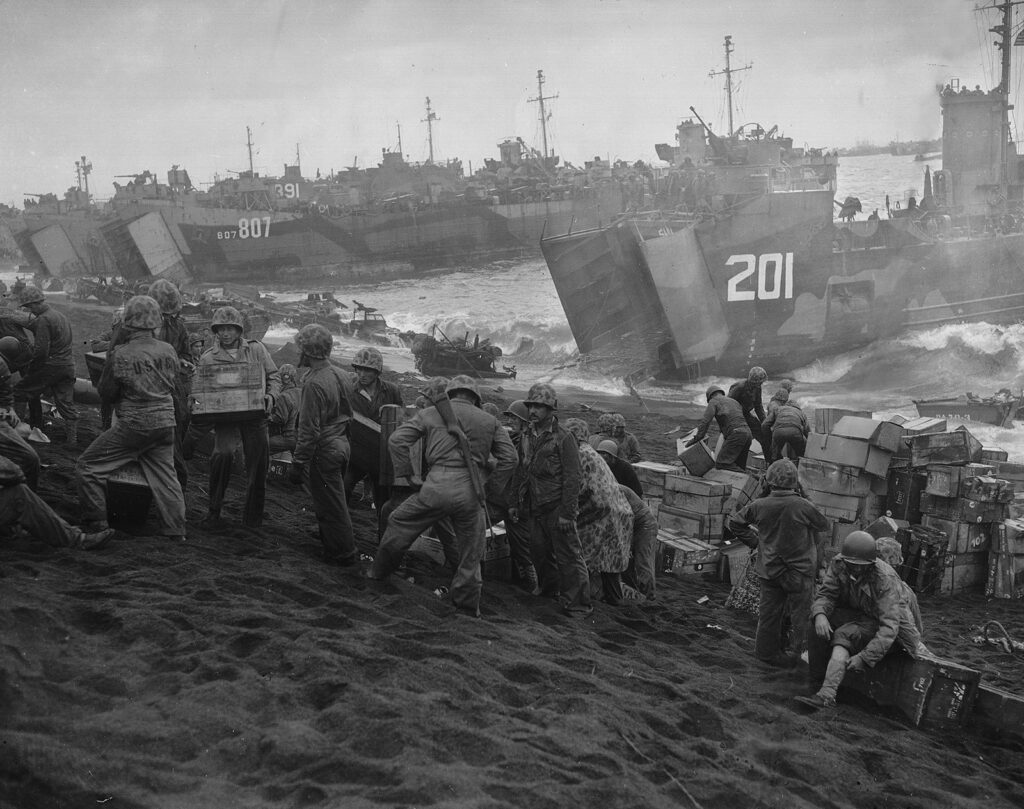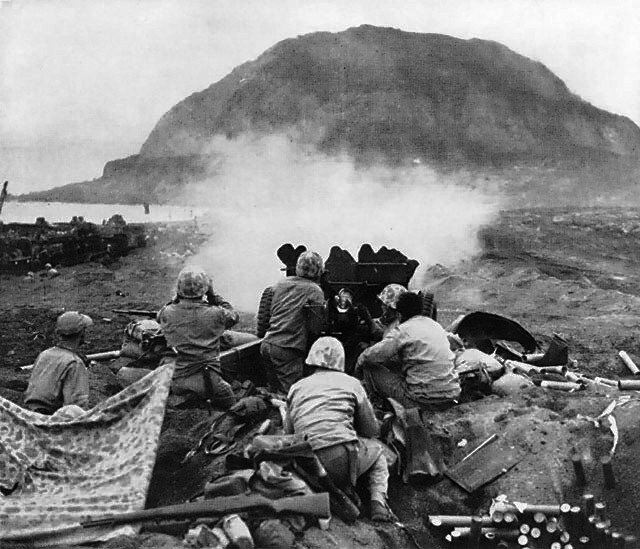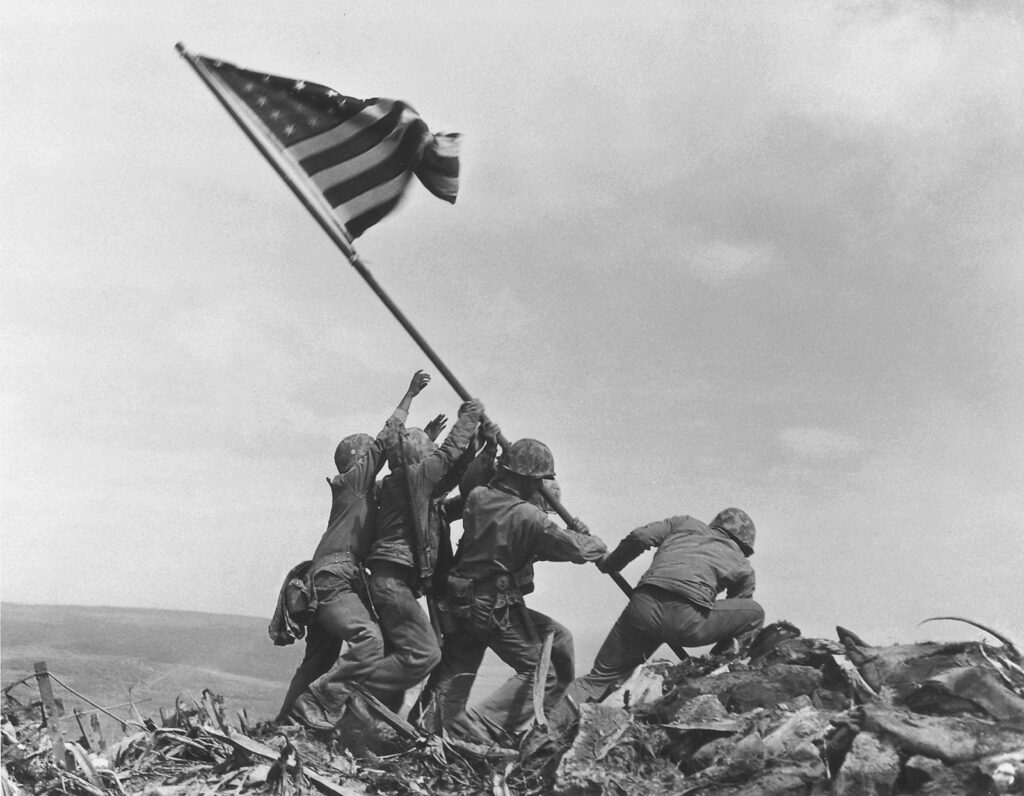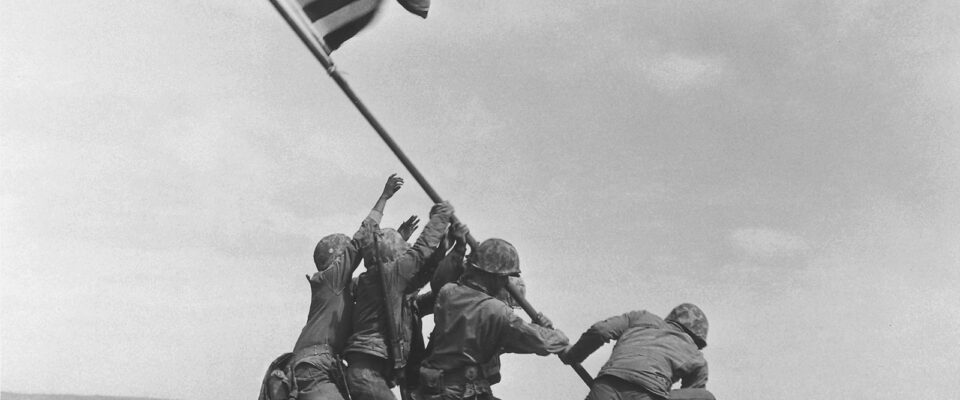The Battle for Iwo Jima can only be characterized as a military campaign of epic proportions which took place between forces of the United States Marine Corps and the military forces of the Imperial Army of Japan in February 1945. The island of Iwo Jima was located 750 miles south of the coast of Japan and at the time boasted 3 airfields which served as a geo-strategic threat to the Asian nation itself if properly occupied, due to its proximity to mainland Japan.
The Battle for Iwo Jima lasted an entire five weeks with historians arguing that this fighting constituted some of the bloodiest moments of all of World War II. By the end of the fighting, out of the 21,000 Japanese imperial forces that were based on the Island it is believed that only 200 survived. The U.S. Marine forces also took heavy casualties, with close to 7,000 Marines losing their lives during combat.
The Invasion of Iwo Jima
The United States Marine Corps staged their signature amphibious landing on Iwo Jima on the 19th of February 1945. Immediately upon landing, the Marines faced unforeseen obstacles, first and foremost an unfavorable landscape with the beaches having steep dunes of soft volcanic ash, making the ascent and transport of vehicles very challenging.

While the American forces progressed through the complicated terrain, Japanese soldiers were waiting for them, executing the strategy of General Tadamichi Kuribayashi, of surprising the American forces as they struggled to make way through the beaches of Iwo Jima. The Marines were under the impression that the bombardment of the island which took place before their amphibious landing had crippled the Japanese, however they were proven to be wrong when they themselves were bombarded by Japanese artillery positions in the mountain which opened fire on the Marines. These tactics, although inflicting significant casualties were not able to suppress the American forces who subsequently went on to take control of one of Iwo Jima’s airfields, partially accomplishing their mission.
The Battle Continues
The strategy of the U.S. Marine Corps was clear, overwhelm Iwo Jima with massive troop forces. Within days, close to 70,000 marines had landed in Iwo Jima. The Japanese whose forces constituted a third of that of the American forces, could not afford to meet the U.S. Forces head on and therefore were forced to put forth attacks with the aid of darkness during the night. The Japanese were somewhat successful, leading to over 25,000 casualties on the American side, however this fighting only seemed to stall what would become inevitable.

Within four days of intense and bloodied battle, Marine forces were able to capture Mount Suribachi, located on the south side of the Iwo Jima island, providing famous images of Marines raising the American flag at the summit of this mountain. This victory, however, did not mean that the Japanese had surrendered.
Iwo Jima is Taken by American Forces
Despite the southern side of Iwo Jima now being conquered, the Northern part of the island was yet to be taken. It was here that General Kuribayashi set up his garrison hidden within the mountains of this section of the island. On March 25th, 1945, the final stand of the Japanese forces took place, whereby 300 of Kuribayashi’s troops mounted a banzai attack. Although the Americans did sustain casualties from this attack, the American forces prevailed and declared the full capture of Iwo Jima a day later.

Despite this victory, U.S. Marines would need to continue combing through the jungles of Iwo Jima in search of Japanese soldiers who refused to surrender and wished to continue fighting. As a result of this guerilla warfare, numerous Americans were killed and the surviving Japanese soldiers hiding in Iwo Jima managed to hide in the island’s caves until as long as 1949.
Despite the importance that the United States placed on the strategic role that Iwo Jima could play in World War II, neither the U.S. Navy nor the U.S. Army were able to use the island as intended. Although the original intention of capturing Iwo Jima was not achieved, the Navy and Air Force were able to build battalions, and construct airfields to be used by Air Force pilots for use in the case of emergency landings.

